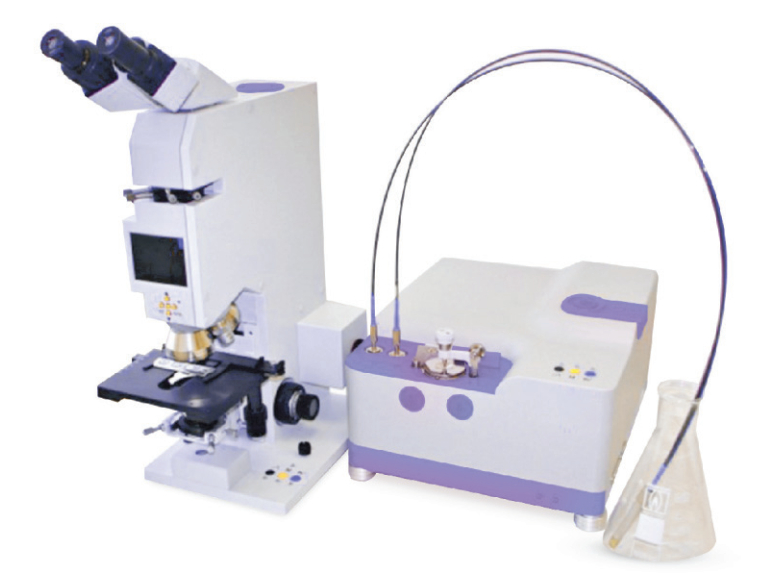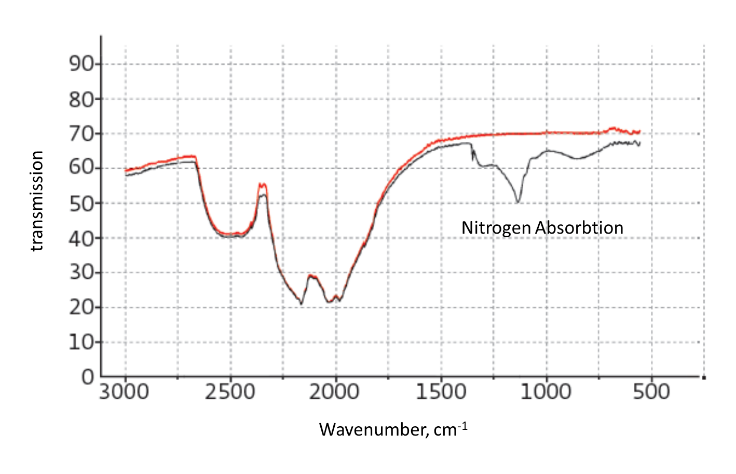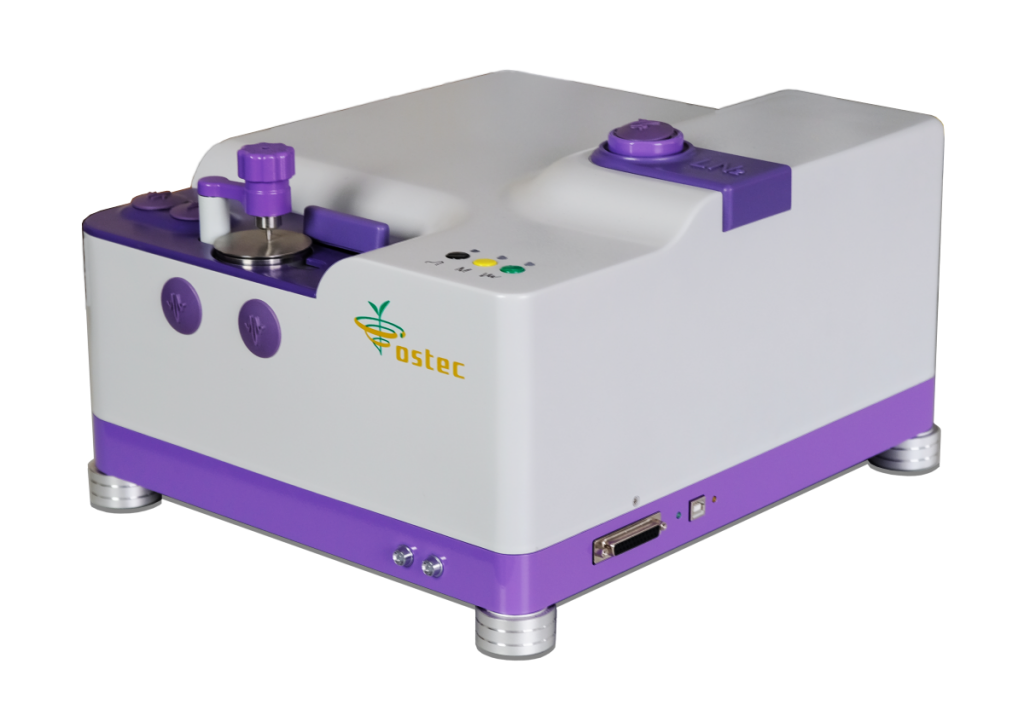Fourier Transform Infrared Spectroscopy (FTIR) is a popular technique in the jewelry world for classifying diamonds, as well as a useful tool for determining artificial diamonds. Natural diamonds are characterized by various inclusions, for example, isolated nitrogen atoms or clusters, the absorption bands of which occur in 1 300 – 1 000 cm
-1
range. Such defects are characteristic of natural stones and are not found in artificial ones.
Besides this, for stones with a defect, “aggregates” can be used to mask the defect; they are organic compounds with a refractive index of the mineral being corrected. In general, such "aggregates" have absorption bands in 2 800 – 3 000 cm
-1 range.
The integrated module of the mirror-diffuse reflection of the IROS 05 IR Fourier spectrometer with an angle of 45° at the upper location of the sample allows you to analyze precious stones without time-consuming sample preparation.
However, if it is necessary to analyze an already finished piece of jewelry containing diamonds or other precious stones in the frame, especially if they are not lying on the surface, but are recessed, and even more small in size – the FTIR mirroring method is not very suitable. In this case, it is better to use an
IR M2 FTIR microscope in combination with
IROS 05 FTIR spectrometer.

IROS 05 FTIR spectrometer specification:
|
Infrared wide-range microscope IROS M2 characteristics and properties:
|
- resistant to disalignment interferometer;
-
wavenumbers range: 470 – 5 700 cm-1 (using ZnSe beam splitter for high humidity conditions and photodetector with Ge window); 470 – 8 500 cm-1 (with DLaTGS detector, on request ); 600 – 6 000 cm-1 (with MCT detector, cooled with liquid nitrogen, optional);
-
resolution: 0.5 – 8 cm-1;
-
signal-noise ratio (RMS): minimum 40 000 (standard conditions: for 1 min., resolution 4 cm-1 with full range 2 000 – 2 200 cm-1);
-
ATR attachment (with diamond, Ge or ZnSe, on request);
-
He-Ne laser;
-
USB interface, spectrometer auto checking;
-
dimensions 375x335x200 mm;
-
weight 15 kg.
|
- spectra registration of micro-objects up to 10 μm in transmission and mirror reflection modes, as well as ATR in the presence of an appropriate lens;
-
spectral range 6 000 – 600 cm-1 (with MCT detector);
-
resolution 0.5 / 1 / 2 / 4 / 8 / 16 cm-1
-
signal-to-noise ratio is not less than 12 000 (scan 1 min, resolution 4 cm-1, range 2 200 – 2 000 cm-1).
-
revolver mechanism with interchangeable lenses;
-
IR lens zoom 15x;
-
visual lens zoom 4x (10x, 36x or 60x available on request);
-
ATR lens (available on request) zoom 36x or 60x;
-
high sensitive MCT detector, cooled by liquid nitrogen;
-
additional detector MG32 (DLaTGS analogue) for operation without liquid nitrogen (DLaTGS available on request);
-
simultaneous operation in the mode of recording IR spectra and the mode of visual observation of the sample;
-
two adjustable diaphragms – iris and rectangular, to identify the registration area of the IR spectrum;
-
built-in video camera, 2Mp, USB.
|

